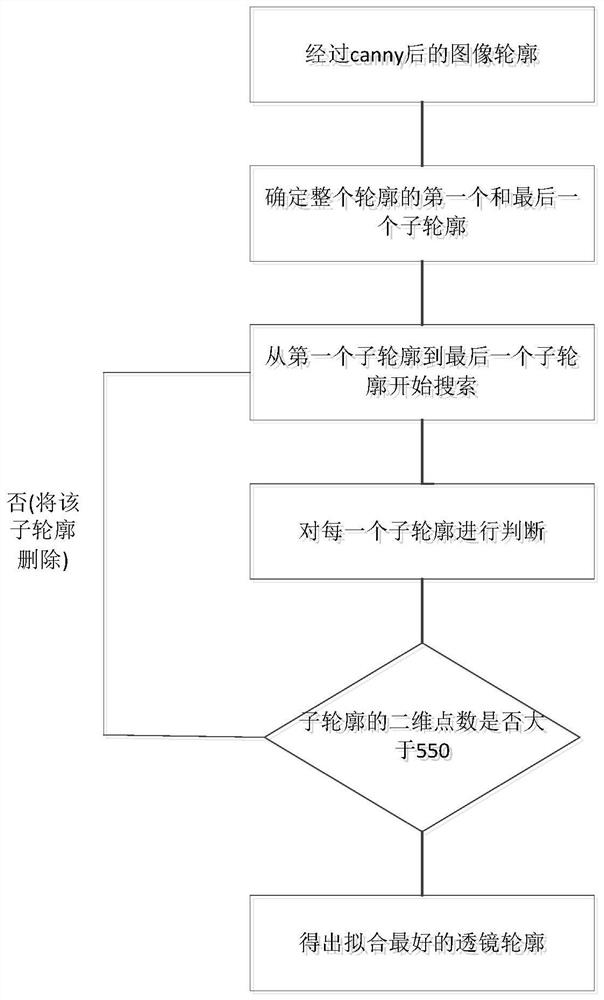Method for identifying and positioning circular transparent lens
A transparent lens, identification and positioning technology, applied in image data processing, instruments, calculations, etc., can solve the problem of inaccurate identification of circular transparent lenses and achieve good results
- Summary
- Abstract
- Description
- Claims
- Application Information
AI Technical Summary
Problems solved by technology
Method used
Image
Examples
Embodiment 1
[0070] The transparent lens is innovatively installed at a certain angle from the side. The camera used is a high-quality cmos camera with 3 million pixels and a metal shell. It can be used by connecting the usb to the pc end. The camera is built-in The 32M memory is used as a frame buffer, and the transmission is more stable. The lens is a C-mount lens, which can adjust the focus and aperture, so that the image of the subject becomes clear.
[0071] The diameter of the transparent lens to be identified is 9mm, the thickness is 2mm, the shape is circular, the upper and lower surfaces are transparent, and the surrounding is frosted. The physical picture of the circular transparent lens is as follows Image 6 shown.
[0072] Driven by the camera, the center point of the circular transparent lens is identified and positioned. After the camera is calibrated, information such as the outline and center point of the circular transparent lens can be found and accurately positioned in ...
Embodiment 2
[0113] The only difference from Example 1 is that the object implemented this time is a transparent lens with a diameter of 7mm, so as to test the applicability of the method, the specific steps are as follows:
[0114] (1) Convert the image to a grayscale image, according to the grayscale mathematical formula Gray=0.299*R+0.587*G+ 0.114*B, that is, the mathematical formula for converting the original color image into a grayscale image, and each image has R, G , B channels of three colors.
[0115] (2) The image is filtered, that is, the noise of the target image is suppressed under the condition of retaining the image details as much as possible, and the processing effect will directly affect the effectiveness and reliability of the subsequent image processing and analysis.
[0116] (3) Use the adaptive threshold segmentation method (Otsu) to segment the image and background of the object, that is, Otsu can adapt to the image background, set a reasonable threshold, and obtain...
PUM
 Login to View More
Login to View More Abstract
Description
Claims
Application Information
 Login to View More
Login to View More - R&D
- Intellectual Property
- Life Sciences
- Materials
- Tech Scout
- Unparalleled Data Quality
- Higher Quality Content
- 60% Fewer Hallucinations
Browse by: Latest US Patents, China's latest patents, Technical Efficacy Thesaurus, Application Domain, Technology Topic, Popular Technical Reports.
© 2025 PatSnap. All rights reserved.Legal|Privacy policy|Modern Slavery Act Transparency Statement|Sitemap|About US| Contact US: help@patsnap.com



